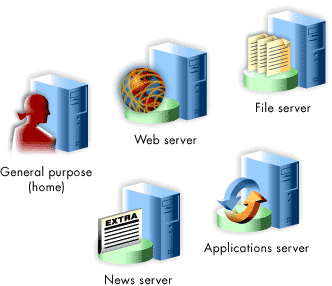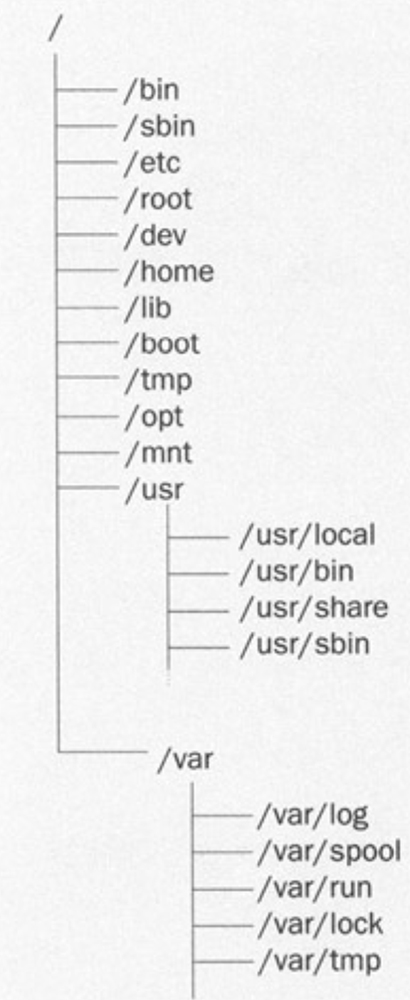| Lesson 2 | Planning filesystems |
| Objective | List the steps required to plan a filesystem. |
Planning Linux Filesystems
The specific filesystems needed by a Linux machine depend on the machine's principal function. For example, are you configuring the machine as a Web server or a news server? Are you going to use it as a general-purpose system for home use or as an applications server? Regardless of
intended function, planning filesystems always involves the following steps:
- Planning partition layout
- Planning partition size
- Planning swap space
- Considering multiple drives (if available)
- Considering future expansion needs
The following illustrates some of the ways a Linux box can be used.
The next lesson explains how to plan partition layout.

Red Hat and all major Linux distributions are trying to conform to the Filesystem Hierarchy Standard (FHS). This standard tries to bring a uniform file organization to the Linux world (which was previously plagued by different file organizations in the various distributions).
The current specification, available at www.pathname.com/fhs/2.2/, explains the various standard directories to expect in a Linux system and the type of files that they are supposed to contain. That said, Red Hat still has some distribution specific directories that you will not find in other Linux distributions.
You can see some of the regular directories in the system in the directory tree given below:
